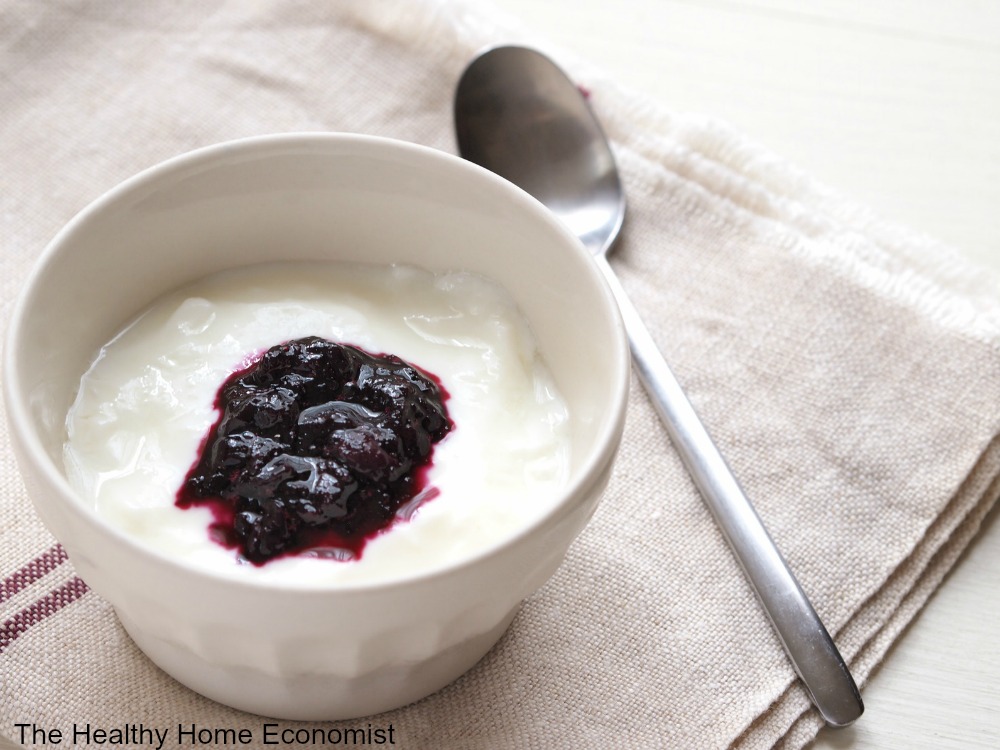 If you’ve watched even one of the videos from the 100+ Real Food video library available on this blog, you probably know that I have a microwave in my kitchen.
If you’ve watched even one of the videos from the 100+ Real Food video library available on this blog, you probably know that I have a microwave in my kitchen.
Do I use it for cooking or heating anything that my family consumes?
No. I haven’t used a microwave to heat or cook anything in many, many years. I much prefer my small countertop convection oven which doesn’t heat food unnaturally and creates carcinogens like a microwave does.
Why don’t I just remove the microwave from my kitchen then? The truth is that the microwave can function as a handy airtight cupboard and proves quite useful for other tasks besides cooking and heating believe it or not.
I mentioned in one of my Real Food videos that I frequently use it for airtight, room temperature storage of freshly baked bread, cookies, and other baked goods.
It also works very well for making homemade raw yogurt. It is, of course, made from unpasteurized milk.
What about Greek yogurt? Is Greek yogurt better? How about the similar German style cheesy yogurt known as Quark? While not necessarily healthier, if you make it yourself allowing sufficient time for probiotic inoculation, these are certainly a nutritious choice! It is ultimately a personal preference as long as the yogurt is fermented properly.
If you don’t have access to raw yogurt, whether regular or Greek, then you don’t know what you’re missing. Pasteurized yogurt even if organic pales in comparison to the digestibility and nutrient value of raw yogurt, so if you are able to snag some raw milk from a local farm, here’s how to make it into raw yogurt.
While the recipe below works fine using the microwave as the incubator, yogurt made in a slow cooker is more dependable in texture.
*This helpful recipe idea was given to me by my friend Cynthia Calisch, who has passed away. May she rest in peace.

Raw Yogurt Recipe
How to make raw yogurt using the microwave as the perfect incubation unit (turned off). When raw, yogurt has a pleasant drinkable style texture compared with scoopable heated yogurt.
Ingredients
- 1/4 cup Plain, whole milk yogurt preferably organic and grass-fed
- 3 3/4 cups Raw cow or goat milk preferably grass-fed
Instructions
-
Scoop 1/4 cup of the plain whole milk yogurt into a clean, wide mouth, glass mason jar (I like these). After you've made raw yogurt one time, you can use your own raw yogurt as the starter for subsequent batches.
-
Warm the raw milk on the stove to between 105 - 117F. No enzymes or nutrition is lost heating to this temperature but the warmed milk enables the yogurt culture to "take" better than room temperature raw milk.
-
Pour about half a cup of the warmed milk into the mason jar and mix with the yogurt.
-
Pour the remaining warmed milk into the mason jar, stir and close the lid tightly.
-
Wrap the mason jar in a thick hand towel, secure with a rubber band and place inside your microwave closing the door. Leave the light in the microwave on to keep a bit of warmth inside.
-
In 24 hours, open the microwave and voila! You will have yourself a lovely quart of raw yogurt!
More Information








Can anybody help me with this?
After heating to 105-115 and wrapping and stuffing into a microwave with the light on, what is the temperature at which the yogurt should stay for the 24 hour period? I have tested my microwave’s light with a jar of water started at 110F with a candy thermometer in it, and it seems to level out at 75F in the morning. It’s winter here (the snowy kind ) and I can’t find a place warm enough in my house. Heating pad? Crock pot?
Just get the best brand of plain whole milk yogurt you can .. biodynamic yogurt from pastured cows if possible.
Hi Sarah!
What would be an alternative to Seven Stars Brand. I can’t find that brand here.
Thanks,
Sarah
Can you use the Fage plain greek yogurt as a starter?
Yes
Sarah, you have done the impossible! You actually found a safe and beneficial use for a microwave!
I would never have believed it. Of course, you never turn on the harmful radiation.
Do you want to incubate your yogourt in an airtight environment? Doesn’t that lead to the growth of dangerous anaerobic bacteria?
catchy title 🙂
we live in the tropics, and ours makes a wonderful hideaway from ants for nuts and dried fruits that they would usually get into.
Sarah, you have finally found a safe use for a microwave. Of course, you never turn on the bad radiation, Very creative.
If yours doesn’t have a switch to turn on the light inside, you can use a napkin lodged in the door channel to make the light go on (takes a few tries to get it right). My big oven with the light on doesn’t rise to the right temp. for fermenting yogurt, but the otherwise unused microwave does.